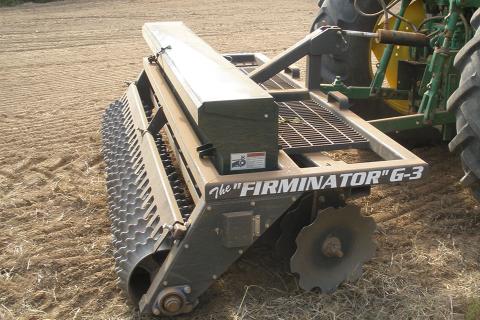Lindsey Thomas Jr. and Andrew Walters | Originally published in GameKeepers: Farming for Wildlife Magazine. To subscribe, click here.
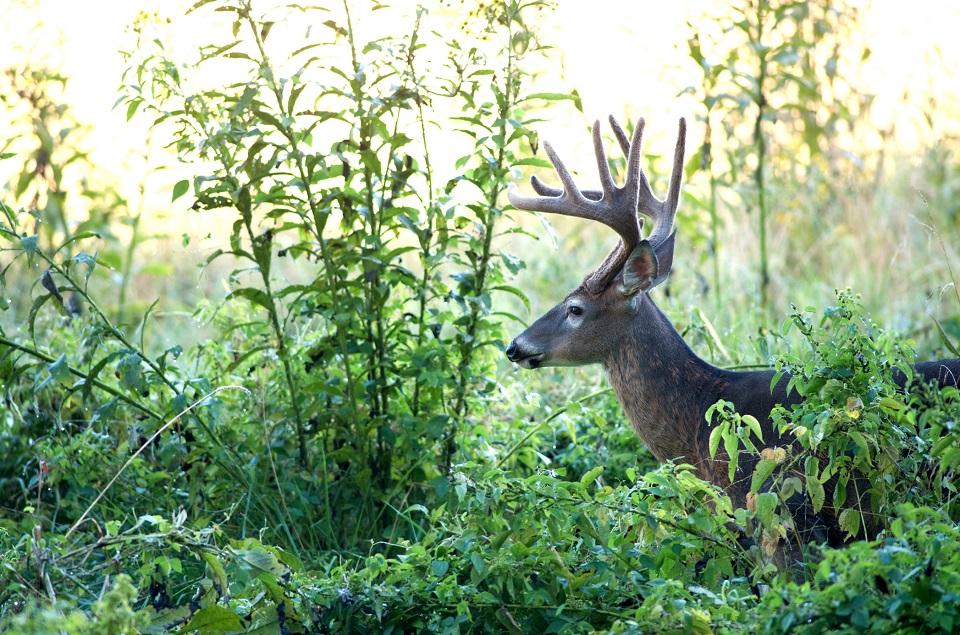
As the Quality Deer Management philosophy becomes further anchored as the dominant mindset among whitetail hunters, achieving greater numbers of mature bucks is not the hurdle it once was. Instead, there’s another hindrance…killing them. Helping to clear that barrier is the “sanctuary,” a landscape feature that has recently become a familiar part of conversations about hunting tactics, property set-up, and small-acreage management.
There are two kinds of sanctuaries used by mature bucks. The most common is the kind hunters create unknowingly. They are the places we don’t like to go because they are inconvenient, difficult to get into, or because we perceive some other place – like a food plot or a tree stand where we had success in the past – is a better place to hunt. Bucks use these sanctuaries to avoid us, but because we don’t know they do, we can’t capitalize on them.
The second kind of sanctuary is one we hunters actively designate. Bucks use these sanctuaries to avoid us, but because we know they do, we can capitalize. We can use designated sanctuaries to shelter immature bucks we don’t want to harvest but someone else might, to encourage these bucks to spend more time on our hunting land throughout their lives, to encourage mature bucks to use our land when regional hunting pressure intensifies, and to allow us to predict the movements of mature bucks so we can kill them.
Designing and using sanctuaries is a relatively new and evolving art in deer habitat management. Questions abound, and opinions vary. I recently spoke with several recognized experts in deer behavior and land management to nail down the best.
Reason for Sanctuaries: Deer Go Where You are Not
The concept of actively creating and managing sanctuaries has only recently emerged into the mainstream of hunting thought. Little, if any, scientific research has been aimed at the topic, but a few studies have indirectly provided answers to some of our questions. Among those are studies of adult bucks wearing GPS tracking collars at DuPont’s Chesapeake Farms research facility in Maryland. Data from GPS collars have allowed researchers to illuminate the home ranges of adult bucks – and the “core areas” within those home ranges – on a hunted property with mixed woodland and agriculture.
“We saw these core areas show up in places that we basically don’t hunt,” said Dr. Mark Conner. Mark described two sites in particular that served as the core areas for several bucks wearing collars. “One is a sanctuary because it is impenetrable to humans, very dense greenbriar and other thorny vegetation,” he said. “The only way you can get into it is to find a deer trail and get on your hands and knees and go in there.”
“The other area,” Mark said, “is a designated waterfowl sanctuary surrounding a pond. Human activity is restricted to avoid disturbing geese and ducks using the pond, and the restricted area – about 25 acres in size – includes woodlands, fields and pockets of native warm-season grasses. It’s almost the opposite of the other sanctuary.” Mark continued, “It’s very open, but like the other sanctuary, there is no human disturbance. These two areas were core areas for multiple bucks, and by our definition of core area, the bucks spent 50 percent of their time in those areas.” Given the differences in the two sites, Mark doesn’t believe habitat density defines a sanctuary. “It doesn’t have to be a place a hunter can’t go,” he said. “It just has to be a place a hunter doesn’t go. Human presence defines the sanctuary, not necessarily the cover type.”
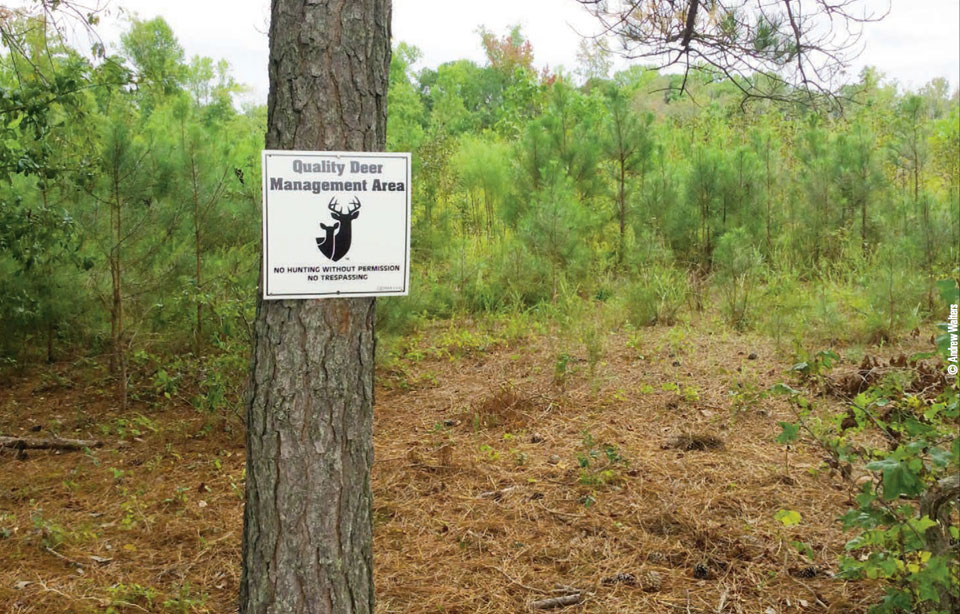
Defining the Goal of a Deer Sanctuary
All of the experts I spoke with agreed with Mark: absence of human activity defines a sanctuary, and mature bucks end up using those areas as a result. “Whether sanctuaries attract bucks to the area because it is more secure for them, or bucks that frequent those areas just get older because they aren’t hunted that hard, we aren’t sure,” said Dr. Karl Miller at the University of Georgia. “Either way, it doesn’t matter. We know mature bucks inhabit those areas.”
With this knowledge in hand, deer managers can begin to incorporate sanctuaries into their habitat and hunting layout. But the details can be difficult to disentangle. What size? How many? Where should they be located? Answering these questions in the appropriate order can be difficult, but it helps to first define the goal for sanctuaries. One of the main goals of Quality Deer Management is to protect yearling bucks. By assigning portions of your land as a refuge, the overall herd characteristics of age structure, density and even in some cases the buck-to-doe ratio can be positivity influenced, oftentimes significantly. It will also provide security for borderline bucks that need another year of maturing, but might make the cut on your neighbor’s property. Of course when dealing with neighbors it will be much easier to navigate this hindrance with the establishment of a cooperative. A well-designed sanctuary will also increase the amount of daylight movement on your property as a whole, increasing your chances for tagging the buck you’re after and truly seeing what undisturbed movement should be like. In the context of this article, our goal is to create hunting opportunities for mature bucks.
What Size Deer Sanctuary is Best?
Let’s start by trying to set some guidelines for size. Coming up with the perfect minimum or maximum size for an effective sanctuary that works in every corner of the whitetail’s range is impractical, because habitat, landforms, and land use practices vary widely. However, “seclusion” can be measured no matter where you hunt.
“It’s not the size that’s as important as the amount of seclusion the sanctuary provides,” said Karl. “One acre by a road? You don’t have a sanctuary. As a minimum, 20 acres comes to mind, but then your presence on the border of the 20 acres is functionally making that a smaller sanctuary.”
Mark Conner also said that seclusion and density play into optimal size. “If you did get near a deer that was lying down in the sanctuary, and it could get up and be comfortable enough to lay down again within that same sanctuary, I think that’s a good thing,” he said. As an example, he cited the waterfowl sanctuary at Chesapeake Farms, which is about 25 acres in size. Because it is a relatively open patchwork of fields and woods, deer can be bumped completely out of the sanctuary by vehicles or hunters passing near. “But if you had 25 acres of impenetrable cover, I don’t think you could push them out,” he said. In other words, a small patch of dense cover may provide more effective sanctuary than a larger patch of more open cover.
As for hunting strategy – our ultimate goal – size is a critical variable. Joe Lacefield is a private lands wildlife biologist with the Kentucky Department of Fish & Wildlife Resources, and he regularly advises small-property managers to use sanctuaries to help attract and hold mature bucks. He believes that even half an acre can provide sanctuary from hunting pressure, and mature bucks will use that space, but effectively hunting around a sanctuary this small is difficult because hunters are more easily detected.
“But a sanctuary can be too large, too,” Joe said. “If you had a sanctuary that was so large it had all the components a deer needs, including food, it would be more difficult to harvest that animal. The idea is to hunt the travel patterns between the sanctuary and the other resources.”
Wildlife consultant Bryan Kinkel of Tennessee agrees with Joe. “Smaller sanctuaries are much easier to hunt, because they have fewer entrance and exit routes,” Bryan said. “You can predict the travel routes much easier. So there’s no such thing as “too big” for the deer, but a sanctuary can be too big for effective hunting. For hunting purposes, I think over 10 acres is getting too large.”
Having Multiple Deer Sanctuaries
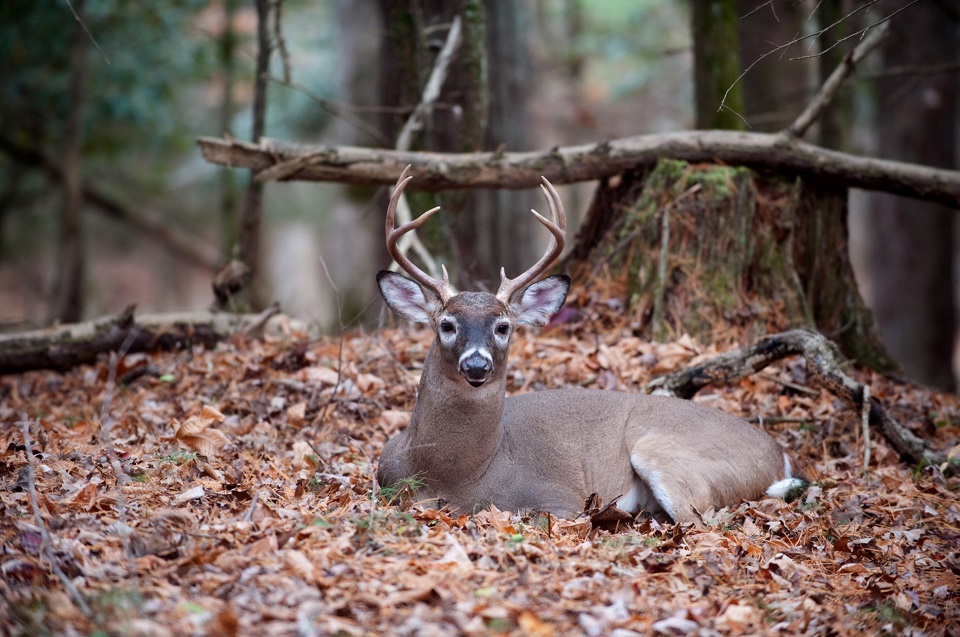
Some hunters wonder whether competition for limited sanctuary cover is a social issue for deer. If sanctuary cover is not abundant, will dominant bucks monopolize a good sanctuary and keep other bucks out? Could a group of does antagonize bucks in spring and summer, when antlers are growing, and run them out of quality cover?
While Mark Conner said he hasn’t studied this aspect in particular, he said there was substantial overlap in the core areas of individual bucks being tracked at Chesapeake Farms during hunting season. Referring specifically to the two sanctuaries on Chesapeake Farms, he said it was almost certain that bucks were using the same sanctuary at the same time.
As for competition from does, Karl Miller said, “We see some segregation of the sexes during the fawning period. The does generally, based on the research, take some of the better quality habitat for fawning. But I don’t think it’s a concern if bucks are being displaced during fawning season. And if the does are in there during the rut, that would be even more reason for the bucks to be there too.”
The advantage of multiple sanctuaries seems to be clearer when it comes to hunting strategy. For some hunters, property size is too small to allow for multiple sanctuaries, but in general, more is better. More sanctuaries allow a hunter to distribute hunting pressure more evenly across a property, and multiple set-ups will allow for hunting options no matter the wind direction.
“I personally prefer to see sanctuaries scattered across a property,” said Bryan Kinkel. “I prefer more, smaller sanctuaries than one big sanctuary.” With multiple safe zones you have a better possibility of encompassing different habitat types. For example, a ten acre thicket of early successional vegetation and a fifteen acre stand of pines can both be sanctuaries, but the habitat types are vastly different and serve different purposes. The only thing better than a productive sanctuary is two productive sanctuaries…or more! I have also noticed that most mature bucks are killed just outside these areas. The more sanctuaries you have, the more of these highly productive edges you have to hunt.
“Second, multiple sanctuaries allow deer to move across a property in a hopscotch pattern, jumping from sanctuary to sanctuary. This gives you more travel patterns, more gaps, more weak places in their movements, and that gives you more hunting opportunities.”
And, Bryan added, if social friction between mature bucks is a factor at all, multiple sanctuaries may allow more mature bucks to spend more time on the same property. As a reality check, remember that no matter the number or size of protected sanctuaries you offer, not every mature buck in the area will gravitate toward your property.
“Different bucks have different personalities,” said Karl Miller. “Some tend to be ‘home boys,’ and some tend to roam over wide areas. A sanctuary isn’t going to protect those bucks that roam a lot, particularly if they roam a lot during the daytime. However, bucks that have a smaller home range can spend a good portion of their time in these sanctuaries.”
Location of Deer Sanctuaries
While options may be limited on any given property depending on acreage and landscape features, there is general agreement that the first sanctuary you establish should be located toward the heart of the property. Subsequent additions should also be orbiting the center of the property and avoiding boundary lines. Many hunters allocate areas of their property to sanctuary that are unused. This is a decent starting point but not necessarily a cure-all. The reason for this is most hunters don’t trek to their “back 40” when hunting, and the areas they regularly hunt are easily accessible. It doesn’t take long for every animal nearby to realize this and become wary in areas where ATVs, trucks, and gunshots are frequent.
Don Higgins, a freelance writer and habitat consultant from Illinois and author of the book Hunting Trophy Whitetails in the Real World, believes the center of a property is the place to start. This helps pull deer farther into the property when the pressure is on, and there are other advantages.
“When the sanctuary is in the middle, you can hunt all sides of it,” Don said. “If it’s on or near a property boundary, you lose access to some of the hunting opportunities that are created, and you may give them to your neighbor. Also, a neighbor can ruin the sanctuary by hunting or walking by with the wrong wind and letting their scent blow in.”
The exception, as Joe Lacefield pointed out, is in neighborhoods with cooperative relationships or even a formal QDM Cooperatives established. “You and I can have a cooperative sanctuary,” Joe said. “We designate an area on a common boundary, and we both get a sanctuary to hunt. We’d have to be pretty good friends to pull that off, but it can be done.”
Beyond these considerations, sanctuaries should be placed in areas that make sense for existing features like food plots, roads and orchards. Predominant wind direction should also be considered to ensure logical stand sites. Placing sanctuaries near existing travel corridors will ensure use.
Bryan Kinkel also likes to place sanctuaries to take advantage of habitat features that encourage deer travel. “When habitat edges converge with a sanctuary, deer, especially bucks, will want to follow these edge lines,” he said. “Edges, ridges, any kind of terrain feature that concentrates deer movement will be used as an entrance or exit to the sanctuary.”
As a real-world example, Bryan described a pair of sanctuaries on opposite flanks of a long, narrow ridge. “The closest point where they almost touch is right in a saddle in that ridge,” he said. “The deer go between the two sanctuaries through the saddle. Multiple mature bucks have been shot in that saddle.”
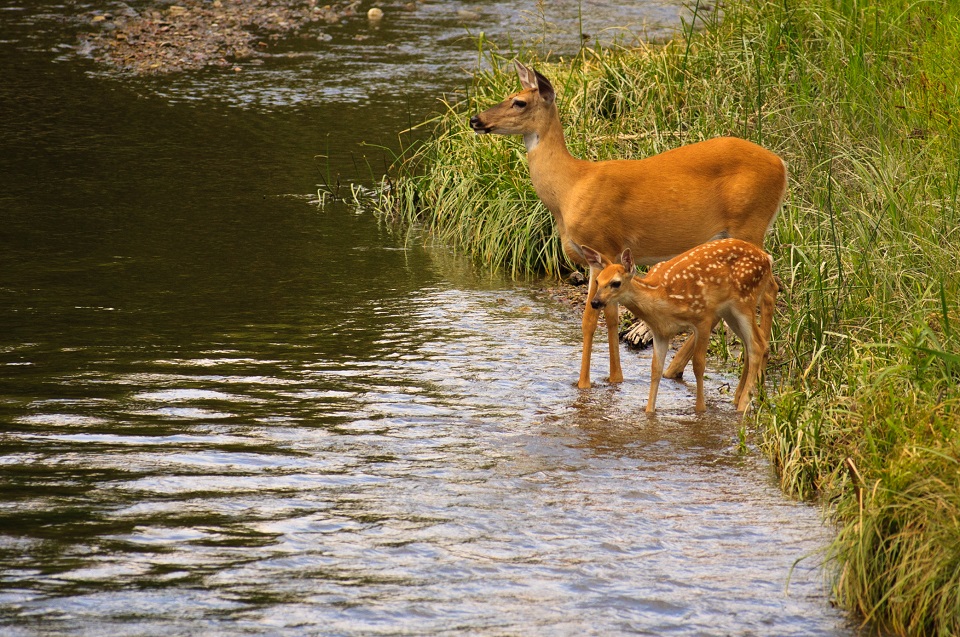
When to Enter your Deer Sanctuaries
Many land managers only enter their sanctuaries a couple of times a year, while others avoid them completely. This depends on the property, size of the sanctuary, landowner/hunter goals, time of year and many other details.
Personally, I venture into the sanctuary on my hunting ground twice a year. Once when searching for shed antlers and surveying the deer sign, and secondly, to enhance the habitat. As you can see, the trips I make are for the sole purpose of learning more about the wildlife usage and improving the habitat. In both cases, I am in and out as quickly as possible.
Practicing habitat management in a sanctuary is a tricky hurdle to clear. In my view, there is no need for a food plot, not even a small one. The establishment and maintenance of a plot causes too much disruption so I avoid them. This is where the enhancement of natural vegetation reigns supreme. In one afternoon you can take a chainsaw and conduct a few crop tree releases and hinge cuts to promote hard and soft mast production as well as secure bedding cover. Also, these techniques are more efficient if conducted during the late winter and spring. As a general consensus amongst most land managers, the spring is the ideal time to slip in and do as much work as quickly and safely as possible.
Despite the fact I am a "game camera junkie," I never place a camera in a sanctuary. It will only lead to more trips back to swap out memory cards, creating more disturbances and an excess of residual scent. This is the only time I recommend not using a trail camera. The other reason I avoid game cameras in these areas is because I have found they are not necessary. The goal of a sanctuary is to ease the hunting pressure and promote the usage of daylight activity on your property. If a sanctuary is properly executed, you won’t need to penetrate its boundary to learn what is on your property. Operate your trail cameras like you normally would and thoroughly cover your property, but avoid the sanctuaries.
It doesn’t matter what you do to your property, you will not reap the rewards of your hard work if the wildlife is pressured enough to modify their movements or even temporarily move off your property onto areas with fewer disturbances. A sanctuary is essentially the icing on the cake when it comes to the hard work of dealing with habitat and wildlife management. This is the perfect time of year to take note of the wildlife on your property and what can be done in the next few months to improve your hunting grounds. If you have a sanctuary already established, try modifying it and see how it works out. If you don’t have a sanctuary, take a thorough look at your property and begin the process of establishing one. You will be glad you did!
Using Natural Sanctuaries
Of course, sanctuaries don’t always have to be created. Existing natural sanctuaries should figure into your strategy. “The farm I hunt has a natural sanctuary that is a steep river bluff,” said Joe Lacefield . “There’s roughly 20 acres that no one goes in. By hunting just off that bluff and rattling, I’ve taken some pretty nice deer in multiple years. But it seems they really only go to that sanctuary area after there’s been quite a bit of pressure, after Kentucky’s youth and muzzleloader seasons when scouting for gun season has started.
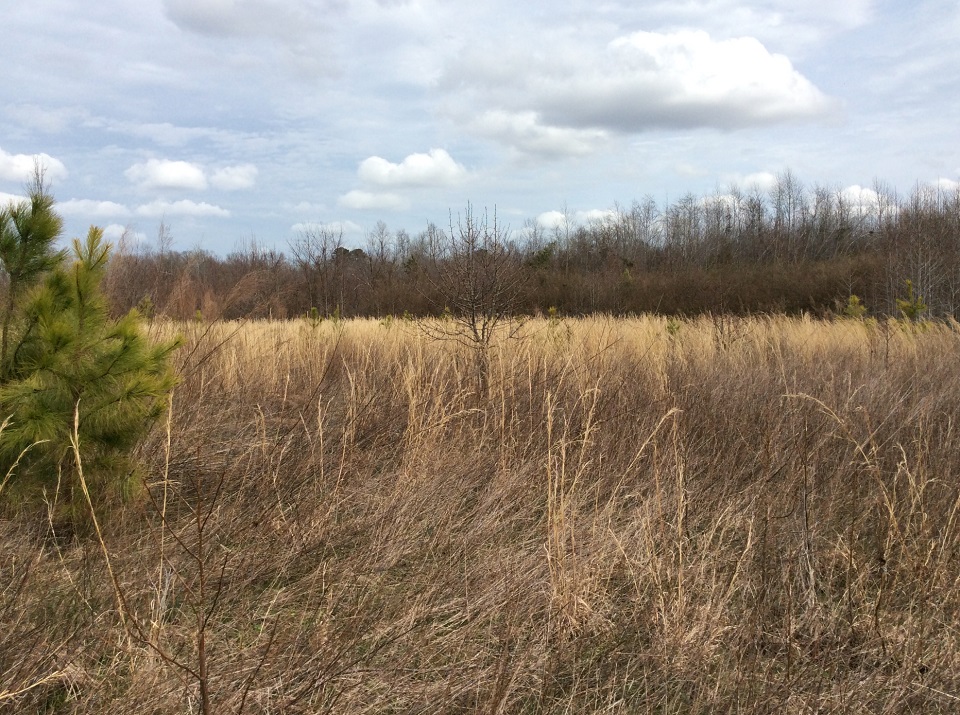
Benefits from Established Sanctuaries
Any deer hunter can benefit from creating sanctuaries, and managers of small properties have the greatest need to incorporate low-pressure areas into their plan. Most deer hunters create sanctuaries already, they just don’t know it. A diligent effort to identify existing areas with light or no hunting pressure may reveal abundant sanctuaries. If not, they are easily created, and the guidelines presented here, combined with on-the-ground details where you hunt, will help determine the number, size, location and distribution that work for you. Efforts to improve, protect, and take advantage of these sanctuaries may rapidly increase your odds of seeing and harvesting mature bucks that use the land you hunt.
For more on growing big bucks and having opportunities for harvesting them, check out Ways to Provide Sanctuary for Big Bucks.















